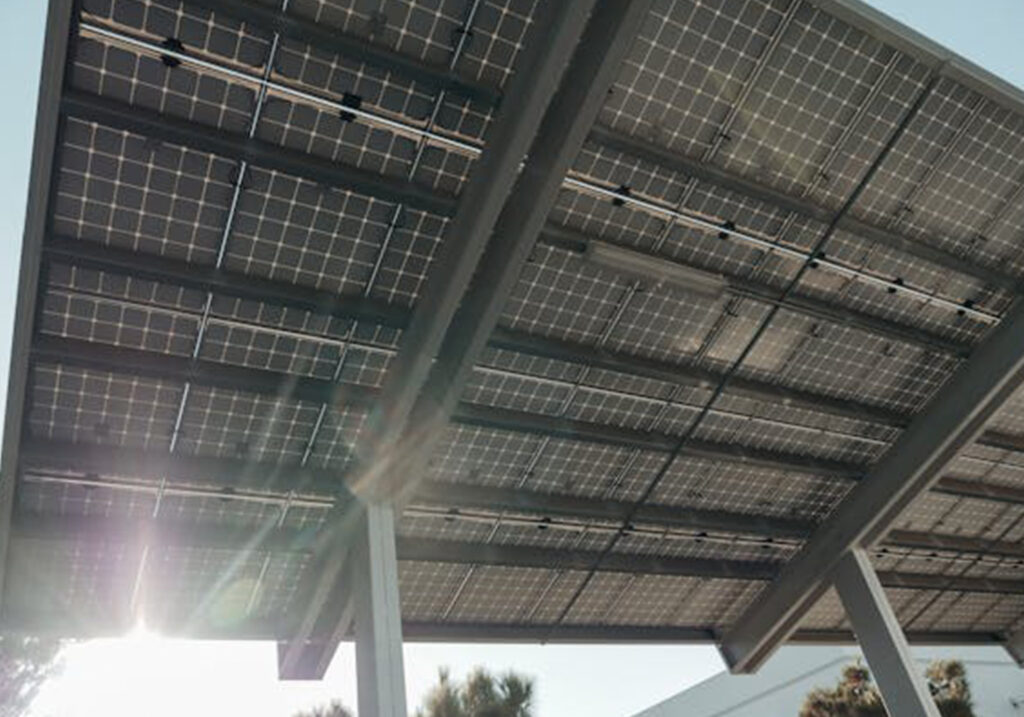Carports have evolved far beyond their utilitarian roots. While they still serve their primary function, modern homeowners now view carports as an extension of their home’s architecture and style.
The shift in perspective has led to a boom in custom designs and aesthetic upgrades that transform simple shelter into a stylish, purposeful feature of the home.
Whether you’re planning to build a new carport or upgrade an existing one, aesthetic customizations can significantly increase curb appeal, complement your property’s design, and even boost home value.
Why Aesthetics Matter in Carport Design
At first glance, a carport’s purpose seems entirely practical. But as with patios, decks, and landscaping, how a carport looks can influence how people perceive your entire property. An ugly or mismatched carport stands out like a sore thumb, while a well-designed one enhances the look and feel of your outdoor space.
Your carport is often visible from the street and may even sit close to your front door. It becomes part of your home’s overall presentation, what real estate professionals call “curb appeal.” A visually appealing carport creates a more inviting atmosphere, gives your property a sense of cohesion, and allows you to make a strong first impression.
The design potential goes far beyond color and roofing. From choosing the right frame style to adding architectural accents or greenery, aesthetic customizations allow homeowners to express personal style, integrate the structure with the home’s facade, and elevate everyday function into artful form.
Choosing the Right Material for Style and Durability
Materials play a pivotal role in defining the visual tone of a carport. They dictate how the structure looks, how well it weathers the elements, and how much maintenance it will require over time.
Metal, especially galvanized steel or aluminum, is one of the most popular choices. It offers a modern, industrial aesthetic that pairs beautifully with contemporary homes. It also provides durability, resistance to corrosion, and a sleek profile that lends itself to minimalist design.
For those seeking a more rustic or traditional vibe, wood offers warmth and charm. A timber-framed carport can be customized with various stains and finishes, allowing it to blend seamlessly with cabins, farmhouses, or craftsman-style homes. Keep in mind, though, that wood requires more maintenance to prevent warping, rotting, or insect damage.
Hybrid designs that combine metal roofing with wood posts or vice versa can offer the best of both worlds. These allow homeowners to create visual contrast and experiment with color and texture.
Finally, polycarbonate or fabric covers offer lighter, semi-translucent alternatives that work well for modern or Mediterranean-inspired aesthetics. These materials are often used in pergola-style or open-air carports that prioritize style and ventilation.
Color Coordination and Finishes
Color has the power to transform a plain carport into a design statement. Thoughtful coordination with your home’s existing color palette is key to achieving a harmonious appearance.
Neutral tones such as white, beige, gray, and black are safe choices that work well with most homes. These tones provide a clean, refined look and let the carport recede visually into the background, especially when nestled near trees or fences.
For bolder statements, consider accent colors that contrast tastefully with your home’s facade. Deep greens, navy blues, or rust reds can add depth and personality, particularly when paired with matching trims or roof tiles.
Color customization isn’t just about paint. Powder coating for metal frames offers a durable, weather-resistant finish that’s available in a wide range of hues. Wood can be stained or painted to enhance its natural grain or achieve a more uniform appearance.
Custom finishes, such as faux wood textures on metal or metallic sheens, can elevate the sophistication of your carport and give it a more bespoke appearance.
Exploring Roof Styles for Form and Function
The roof is arguably the most prominent feature of any carport and one of the best opportunities to showcase design sensibility. Roof style affects not only appearance but also performance.
A gable roof is a popular choice that mimics the classic pitch of a house roof. This design works well in residential neighborhoods, offering symmetry and elegance that feels familiar and cohesive. It also enhances ventilation and sheds precipitation effectively.
Flat roofs offer a minimalist, modern look. They’re often used in urban or contemporary settings and are favored for their clean lines and simplicity. However, they require careful engineering to manage water drainage.
A skillion or sloped roof, which tilts in a single direction, is another sleek option that works especially well for standalone or side-attached carports. Its asymmetrical appearance adds architectural interest and suits homes with modern or industrial themes.
For a touch of drama, a curved or arched roof creates a unique, flowing profile that stands out visually. These are often used in custom builds and work well in tropical climates where shade and airflow are priorities.
Adding decorative eaves, extended overhangs, or custom fascia boards to your roof can further enhance the aesthetic appeal.
Enhancing Carport Columns and Frames
The vertical supports of your carport can serve as a blank canvas for decorative upgrades. Dressing them up adds sophistication and visual weight to the structure.
Boxed-in columns with cladding can transform standard metal posts into statement features. Wrapping them with wood, stone veneer, or brick gives your carport a finished, architectural look that echoes your home’s exterior materials.
Decorative trims and molding can be added to wooden columns to emulate classical styles, while modern builds might use stainless steel or aluminum sleeves for a polished, contemporary feel.
If you prefer a more natural, outdoor vibe, consider using rough-hewn timber posts or reclaimed wood to add character and history to the design.
Column lighting is another valuable aesthetic and functional upgrade. Mounted sconces or post lights not only enhance nighttime usability but also contribute to a warm, welcoming atmosphere.
Integrating Decorative Details and Personal Touches
Beyond structure and color, smaller design elements can make your carport truly unique. These include stylistic trims, lattice work, corbels, or customized brackets that reflect your personal taste or your home’s architectural heritage.
You might add archways or trellises to soften the carport’s visual lines. These features work especially well in garden-centric properties or as transitions between the carport and a patio or walkway.
For privacy or weather protection, consider side paneling that doesn’t compromise the carport’s open-air feel. Decorative metal screens, wood slats, or frosted polycarbonate walls can serve as stylish windbreaks and add layered visual texture.
You can also personalize your carport with signage, address numbers, or family initials incorporated into the structure. Artistic metalwork or laser-cut panels create a modern look, while wooden plaques or hand-painted signs suit rustic themes.
Adding Landscape and Green Elements
Landscaping plays a huge role in making your carport feel integrated into your outdoor environment. Instead of a stark slab of concrete, consider surrounding the carport with decorative stone, pavers, or even grass pavers that blend naturally with the yard.
Planter boxes placed at the base of columns or along the perimeter bring greenery into the design. Choose climbing vines or trailing plants to soften the edges and create a living canopy over time. Jasmine, wisteria, or grapevines offer seasonal beauty and fragrance.
If your carport sits near a garden or driveway, build a transition path with stepping stones, gravel walkways, or bordered hedges. Lighting along this path adds drama and safety.
Trees positioned strategically nearby can frame the carport, provide shade, and contribute to an overall natural aesthetic. Just ensure that falling leaves or branches won’t become a maintenance issue.
Functional Upgrades That Add Visual Appeal
Aesthetic improvements can often coincide with functional upgrades. For instance, upgrading your carport’s flooring adds durability while improving its appearance.
Stamped concrete, decorative stone, and textured epoxy coatings can all be used to create beautiful, non-slip surfaces that are easy to clean. You could even create patterns, borders, or inlays that mimic tile or wood grain for added character.
Adding gutter systems not only protects your carport’s integrity but also offers design opportunities. Choose gutters in contrasting or matching colors, or opt for hidden systems for a clean, streamlined look.
Solar panel roofing is another smart upgrade with a modern edge. It combines sustainability with sleek aesthetics, particularly when paired with minimalist design.
Lastly, consider enclosing part of the carport for storage with a custom-built shed or cabinet wall. Matching the enclosure’s materials and finishes to your home or the rest of the carport ensures it looks intentional and stylish.
Carport Lighting as a Design Element
Lighting is one of the most underrated aesthetic upgrades you can make to a carport. The right lighting setup not only improves visibility and safety but also sets the mood.
Recessed lights in the ceiling of a carport provide a clean, professional appearance, especially for enclosed or partially enclosed designs. LED strip lights under the roofline create an ambient glow and modern flair.
Pendant lights or hanging lanterns are great choices for carports with gabled roofs or exposed rafters. These lights serve as decorative accents and enhance the vertical space.
Motion sensor lights add convenience and security, especially when integrated with a home automation system. For a more luxurious touch, smart lighting systems can adjust color temperature and brightness depending on the time of day or activity.
Adding solar-powered path lights or uplighting to landscape elements around the carport rounds out the design and ties everything together.
Matching the Carport to Your Home’s Architecture
Perhaps the most important aesthetic rule is cohesion. A carport that matches your home’s existing style creates a seamless visual experience.
Modern homes often call for sleek, angular designs with monochromatic or high-contrast color schemes. Metal-framed carports with flat or skillion roofs fit this aesthetic perfectly.
Traditional or colonial homes may benefit from carports with arched braces, wood finishes, and color palettes drawn from brick, stone, or shingles. Attention to roof pitch and symmetry is especially important here.
For craftsman or bungalow-style homes, use exposed beams, natural wood tones, and detailed trim to echo the architectural language of the main house.
Don’t be afraid to mix styles when done intentionally. For example, a modern metal carport with wood accents can bridge the gap between a traditional house and a contemporary garden layout.
Conclusion
Carports may be utilitarian by nature, but that does not mean they have to be plain. With thoughtful customization, your carport can become a design asset that enhances your home’s architecture, supports outdoor living, and expresses your personal style.
Whether you go for sleek modern minimalism, warm rustic charm, or elegant traditional design, there’s no shortage of options to tailor your carport’s aesthetics. Start by identifying what you want the space to say—then bring that vision to life through materials, color, lighting, landscaping, and detail.
In the end, a beautifully customized carport does more than protect your car—it creates a lasting impression, raises your property’s appeal, and turns a simple shelter into a statement piece.

